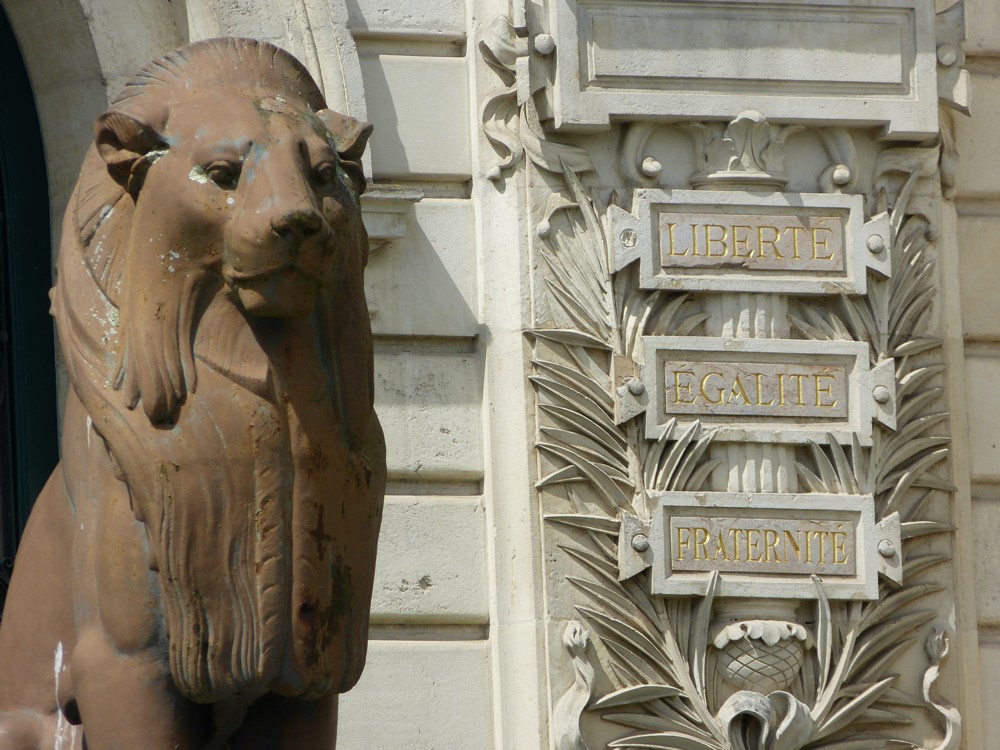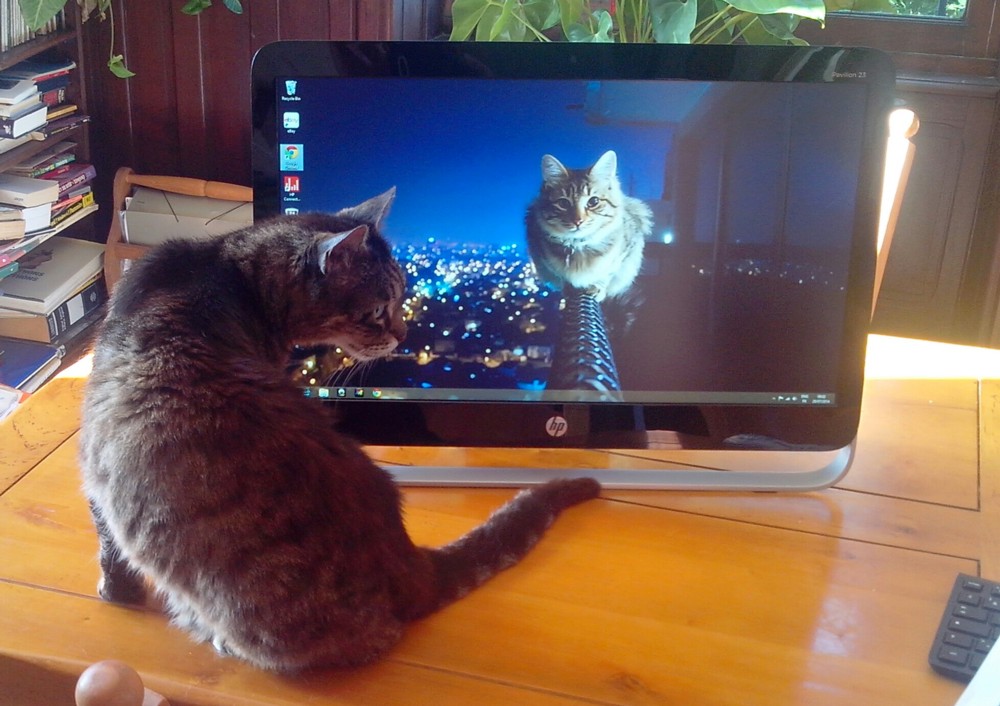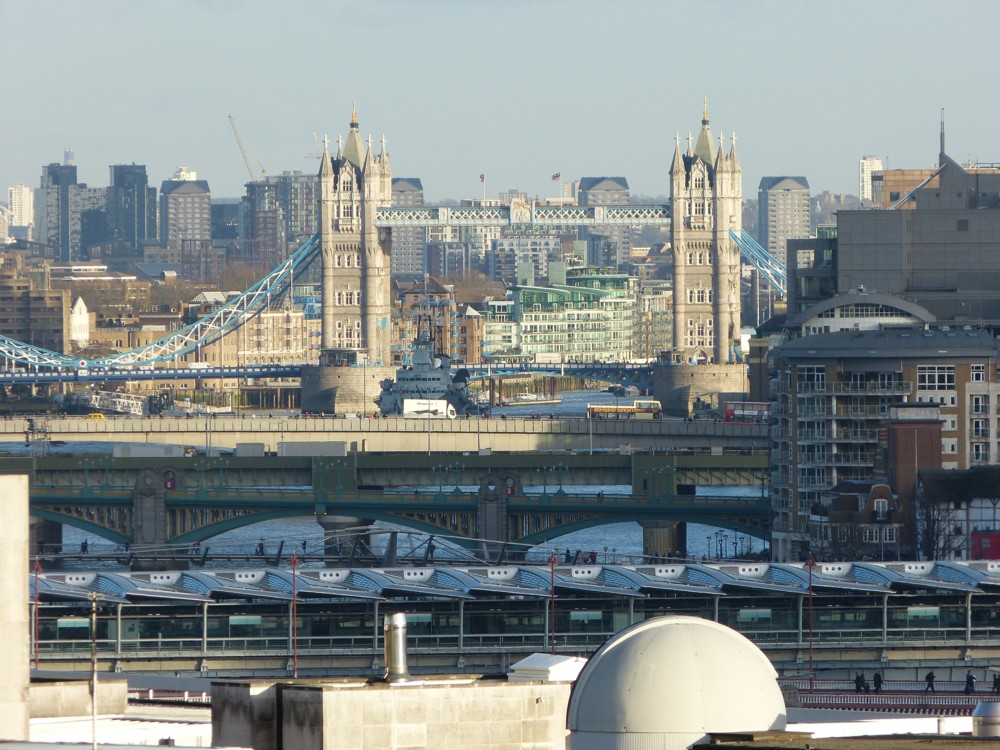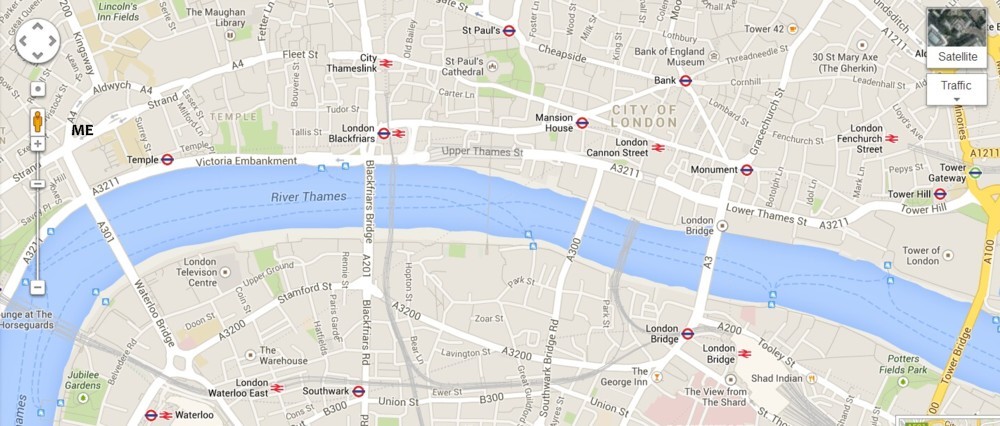I loved them when I photoed them last January. Now the chimney pots and rooftops of Paris get serious Real Photographer attention, from Michael Wolf:
One of David Thompson’s latest clutch of ephemera.

I loved them when I photoed them last January. Now the chimney pots and rooftops of Paris get serious Real Photographer attention, from Michael Wolf:
One of David Thompson’s latest clutch of ephemera.
Yes, I’ve been in France, and now I’m back. Have been for several days actually, but I spent my recent blogging time doing this, which is a photo-decorated ramble on various things I saw in France, or thought I did, for Samizdata.
I really want to get back into the swim of things over there, after a recent dry spell, and was accordingly determined to finish that ramble before I resumed rambling here.
Since this is Friday, here are some French cats.
Cat number one stands outside Vannes town hall:

Cat number two is impressively perched on an impressively high ledge, somewhere or other. Cat number three, the cat of the friends I was staying with, is shown here, not being very impressed with cat number two:

This photo was taken by Tony, to whom thanks, and to whom thanks also for emailing it to me.
Here, on the other hand are two further photos that I did take of cat number three:
No, I don’t know why his right ear is green on the inside. I only noticed this when I got home.
His name is Caesar (sp?), and he actually does answer to that name. It’s not tone of voice, it’s the name, because when I said this to him for the first time, he immediately looked up to see what I had in mind.
There is another cat, Basil, who drops by at the home of Tony et famille from time to time, but he is more shy. He was otherwise engaged, on my last day there which was when I finally decided I wanted to photo the two cats. Caesar showed up, but not Basil. Another time, maybe.
Caesar is now very old, and I may never meet with him again. We got on well.
I’ll let this guy explain it:
The areas around Rotherhithe and Surrey Quays was once a series of docks that were slowly filled in and lost in the 1970s and early 1980s.
As befits an area that was originally a marsh, and then an industrial hub, it was entirely flat, so it may surprise people to learn that there is a decent sized hill lurking right in the middle of these former docks.
Stave Hill is however a very modern edifice, being made up largely from rubble left over from the clearance of the docks and then shaped into a sharply defined flat-topped cone. It is also only just about as high as most of the houses that surround it, so while you get a view from the top that is almost entirely free of blockages, the hill itself is hidden from people looking the other way.
The reason I’ve no time to describe it is I’ve just got back from taking photos from the top of it myself. I took a million zoom shots of individual Big Things, on their own and in clumps, but here is a panoramic shot that gives you a sense of what the place is like:
I forced myself to pick just the one shot from the twenty seven million I took. Well, 463 to be more exact. Often, after one of these photo-expeditions, I pick out about twenty of the best shots, and and then never get around to showing them here at all, because it becomes too complicated, and there is too much to be said about them all. This time I’ve kept it simple, and stolen stuff from elsewhere, and that way, I got it done.
I will say this, though. The sheer number of Big Things you can see from this spot is truly amazing. Some of my favourites are Big Things that you can just see the very top of, like Big Ben and the tower of Westminster Cathedral. And I think I also spotted the tops of two of the chimneys of Battersea Power Station, but that needs to be checked. Definites include; the Gherkin, the Shard, the Cheesegrater, the Walkie Talkie, the Strata, the Spraycan, the Wheel, Tower Bridge, the Dome of St Paul’s Cathedral, the Monument, and, away on the other side, the Docklands Towers. The tricky bit is getting as many Big Things as possible into the one shot, which is quite hard. For instance, you can’t see the Gherkin in the picture above. Those trees do not help. For this reason, it might be fun to go back in the winter, when the damn leaves have gone away.
I get google emails whenever “3D printing” is mentioned at all prominently on the www, and the latest one definitely got my attention. It linked to a story about a guy who has been 3D printing in his garden.
A building contractor living in Minnesota has developed his own 3D printer which can print concrete directly from CAD design software, and he has used it to 3D-print a castle in his back garden.
Here is how that looks:
Calling that a “castle”, as this story does, is a bit of a stretch. At the moment, if this is anything to go by, open-air and architectural 3D printing seems to have all the deft elegance and aesthetic flexibility of a dot matrix printer. But the equivalents of laser printers, and then (what we have now) cheap laser printers, and cheap colour printers, will surely soon be with us. And in due course the building trade will become something completely different, and hence buildings will too.
Yet another reason why I would love to remain alive for another century, just to see how this kind of stuff develops.
In England, this guy would either have failed to get planning permission for this erection, or else he would now be being told to take it down, for having failed to get planning permission.
About every other day Google sends me news of Emmanuel Todd, news in French. Sometimes it is news of him talking on video, in French. I can just about order a croissant in a French shop, but that’s as far as my French goes.
So, imagine my delight on learning about this video, of Emmanuel Todd talking … in English!
What he is saying is that the different family systems of Europe mean that the different nations of Europe are politically incompatible, and accordingly that the Euro is doomed. Worth a watch, if that kind of thing interests you. In particular, the way that the Euro is putting Germany in charge of France is not at all what the French elite had in mind, and this means that sooner or later the French will have to dump the Euro. But first, their elite has to explain why it made this hideous blunder in the first place. Because dumping the Euro would mean admitting they should never have done it in the first place.
Tim Evans recently gave a talk to the End of the World Club (silly name, great talks) about politics, David Cameron’s politics in particular. He said that Cameron has no problem with Britain leaving the EU, while he remains Prime Minister. Sure enough, about two days later, an email from Tim arrives, complete with the link, saying: And so it starts …
If you’ve not been there before, I recommend visiting Handpicked London. I’ve just been browsing through it, and found my way from it to Photographs of Tower Bridge being constructed are found in a skip, from December 2011, which I do not remember noticing at the time. (The first two of those are Facebook links, and maybe they don’t last. You have to register, is what the second one just said.)
These photographs of Tower Bridge being constructed have been unveiled after a stash of hundred-year-old photos were found in a skip. The 50 sepia pictures, the most recent of which date back to 1892, reveal in incredible detail the ingenuity behind one of the capital’s most popular tourist destinations.
Hybrid modernism. Modern in its manner of creation. Ancient in appearance. An architectural style with a lot of mileage in it.
LATER: More stuff from me about towers here.
Regulars here, or for that matter there, will know that I have for many years now been at enthusiastic fan of the French historian and social scientist Emmanuel Todd. In recent years, this enthusiasm has at last started to become a bit more widespread.
Two of the world’s most important Todd-enthusiasts are now James C. Bennett and Michael J. Lotus. Quite a while ago now, they sent me an email flagging up a piece they had contributed to Hungarian Review, which contains some interesting biography about Todd, and about how his own particular family history contributed towards making him into the historian of the world that he later became.
Todd developed this grand theory, about how literacy triggers particular sorts of political upheavals in particular places, depending on Family Structure, and then when the political dust has settled fuels economic development, But what got Todd thinking about all this?
According to Bennett and Lotus, the starting point was: How Come The French Communists Are Doing So Badly And Never Seem To Do Any Better No Matter What They Try?
He was the product of an extended family of French Communist Party activists and journalists, and grew up hearing his father and relatives arguing around the kitchen table. Anglo-Americans had tended to regard the French Communist Party of that era as formidable, successful, and continually on the verge of seizing power. From the inside, Todd grew up hearing his family lament the eternal failure and futility of the Party. (He left the orthodox Communist movement quite early, and in fact was one of the first scholars to predict, in 1976, the coming collapse of the Soviet system.) For some reason, the Party was well established in certain regions, and completely without support in most others. The Socialists were dominant in others, and it was noticed that the same social classes would tend to support either Socialists or Communists, depending on the region, but never split between the two, and when they failed to support the one, would not switch to the other, preferring alternative parties. In other parts of France, neither party had a foothold, and the same social classes that supported either Socialists or Communists in their stronghold regions supported entirely different, and not particularly Marxist, parties. The reason for this split was constantly debated in Todd’s family circle, but no possible explanation seemed to hold water. It was a great mystery.
Once Todd began studies at Cambridge, and encountered what we are calling the Continuity School, he began developing a social analysis that perfectly predicted the voting patterns that had been such a mystery in his family’s kitchen debates. France is far from homogenous, and in fact is a patchwork of quite different cultures and family systems. When Todd saw the distribution of the various family systems of France, as established by inheritance rules and customs, he saw at once that both the Communist and Socialist electoral strongholds corresponded to the areas dominated by two distinct family systems. Where other systems prevailed, neither the Communists nor the Socialists could gain any real foothold.
You can see how Todd was perfectly primed to generalise the principle from France, and then England, to the entire world.
In the course of my Todd readings and meanderings, I probably was told (perhaps by Todd himself in his book about French politics (which I have long possessed (and which I see you can now get second hand for £2.81 (in English)))) that Todd had been raised by baffled and frustrated Communists. But I had not really taken it in.
I am very fond of the ballerina statue at the top of the Victoria Palace Theatre. I recently photoed it with a red crane behind it, that being one of my favourite recent snaps.
This afternoon, I photoed it again, again with craneness:
What I had not realised until today is that this is a statue of Anna Pavlova. Says the Victoria Palace Theatre:
From 1911, the year after its rebuilding to its present design by Frank Matcham, the Victoria Palace had a gilded statue of prima ballerina Anna Pavlova poised above it. This was owner Alfred Butt’s homage to the dancer he had spectacularly introduced to London.
The tribute was not appreciated by the superstitious ballerina, who would never look at her image as she passed the theatre, drawing the blinds in her car. The original statue was taken down for safety reasons in 1939 before the blitz and has completely disappeared. It is not known whether it is in someone’s garden or was turned to wartime military use, such as bullets.
The Victoria Palace moved into the new millennium with an adventurous building programme; enlarging the Foyer, WC facilities and increasing the dressing room space, whilst maintaining all the feel and character of a historic building.
In 2006, a replica of the original statue of Pavlova was reinstated to its original place above the cupola of the Victoria Palace and her gold-leafed figure once again gleams above us.
Blog and learn.
This is one of my favourite Big Thing Alignment shots, to be observed by emerging from Oval tube and walking north east along the A3. Do that, and you soon see Strata in the distance, and directly behind it, the Shard, thus:
These shots are two of many such that I took on June 25th 2012.
On the left: the heart of the matter. On the right: the context. Often, when you have a zoom lens, you show the zoomed shot, and neglect how it actually looked, along with all the other stuff you could see. When I say “you” I of course mean “I”.
I worked out that this shot might be there for the taking by looking at the map. Strata is at the Elephant and Castle, which is the big yellow roundabout in the middle of this map:
And the Shard is at London Bridge railway station, top right.
What this shows, I think, is another contribution made by technically rather poor photographers like me. We may not take our pictures that well, from the point of view of using the right cameras, lenses, f numbers, and general technical jiggery pokery. But we often take great shots, as in, we often take great shots rather badly. A technically better photographer might see this posting, and say to him or herself: Hey I like that shot. I’m going to go out there and do it again, properly, while crediting the person who first did the shot and thus showed me that the shot was gettable.
(Are Real Photographers reluctant to do this kind of copying-stroke-improving of amateur shots, for intellectual property (and hence money) reasons? Is there a sense in which, photographically speaking, I now “own” this view?)
A similar point could have been made in the course of this posting, which also included a map showing how that shot happened, and where to go to get it. That too was a great shot, done just about well enough to show what a great shot it might have been, but only just.
I returned to the Radio Bar at the top of the Hotel ME on Saturday 7th of this month, when the weather was brighter and breezier. I was in a hurry to be back for an appointment at home, and did not have time to really look at what I was photographing, and anyway, my eyesight is poor and I can’t see a lot of it if I want to.
So, for instance, when I took this picture, …:

… I thought I was photographing just the one big, obvious bridge, the one with the towers. But it turned out that I was photographing seven bridges. Newcastle eat your heart out. Sorry about that big white circumcised cock in the foreground, getting in the way. It looks like it’s doing radar, but I doubt that.
Moving on quickly from that, let me itemise the bridges, from nearest to furthest away.
Here is a google map which shows how this picture was possible. Where it says “ME” (photo manipulation is not my strong suit but I did manage to add that), at the far left, is where I was standing, so ME means both me and the hotel of that name. Click on this map to get it bigger:

So, first, nearest to me, on the right of the big white cock, we can see pedestrians crossing the river on Blackfriars Bridge, the road version.
We cannot then see the isolated, do-nothing columns of the Blackfriars Railway Bridge that isn’t, so that doesn’t count. But just beyond those columns, we do clearly see, second, the Blackfriars Railway Station Bridge that is, with its long line of slanting roofs.
Third, we can see the upper parts of the Millenium Bridge (featured in the bottom three pictures here, where there is also another snap of those weird Blackfriars columns), the footbridge that famously wobbled when first opened, which does about half the job of taking pedestrians between Tate Modern to St Paul’s Cathedral.
Fourth, slightly green despite being in the shade, is Southwark Bridge.
Fifth, there is the severely functional railway bridge that takes the trains from the south east over the river to Cannon Street Station. You can just make out a clutch of signals at its left hand end as we look at it.
Sixth, we have “London Bridge”, and I can help adding sneer quotes. What a come-down that bridge is from how London Bridge used to be. No wonder so many people think that Tower Bridge is London Bridge. The actual London Bridge is so boring.
One of the reasons I especially like the new Blackfriars Railway Station Bridge is that it sets a precedent for putting buildings on a London bridge, and makes it more likely that London Bridge itself might one day be rebuilt in something like its former glory. Maybe not quite as tall as it once was, but with buildings on it, like Ponte Vecchio. What would be particularly cool is if, just as in former times, a new London Bridge could be built, strong enough to be a platform for buildings, but if it was then left to individual plot owners to decide exactly what to put on each plot.
And finally, seventh, there is Tower Bridge, at the far right hand end of the map.
London. It just keeps on getting better.